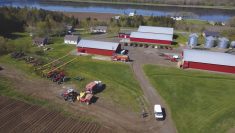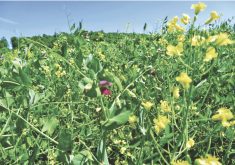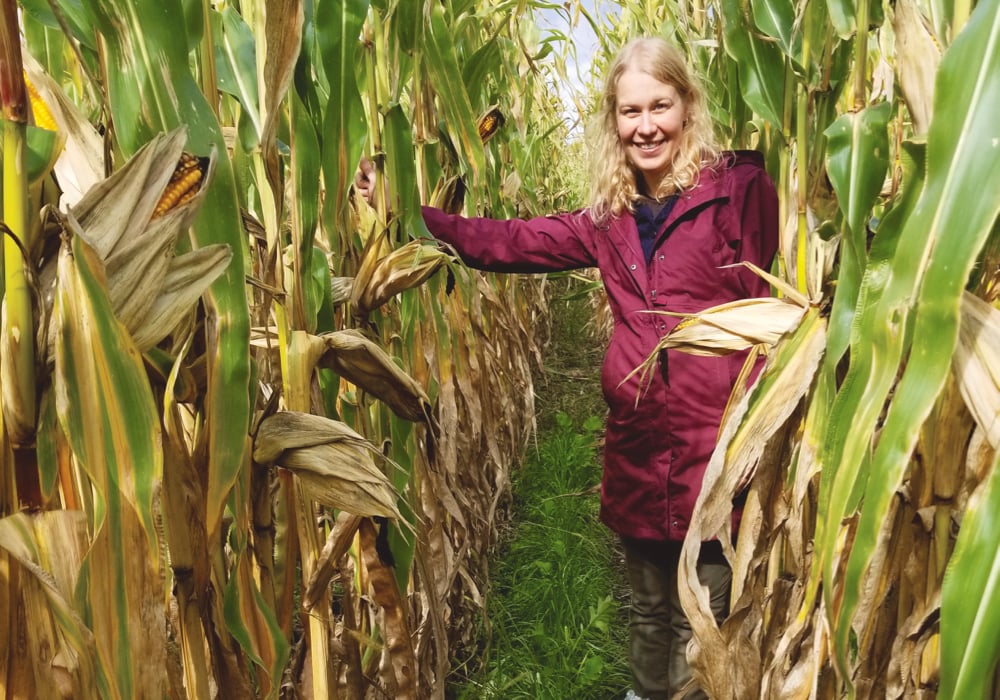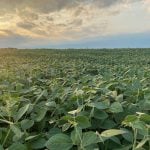Farmers’ current interest in intercropping has caught some off guard. On November 29, 2017, the Saskatchewan Ministry of Agriculture ran an intercropping workshop in Regina.
Workshop organizers expected about 40 people. But 140 people showed up, including several from Pennsylvania, Iowa, and Michigan.
Sask Ag ran a second intercropping workshop in January, and another 200 people showed up. Those workshops convinced provincial government staff that there was interest, says South East Research Farm research manager Lana Shaw.
Intercropping isn’t really a new idea. It’s been studied by researchers around the world. Martin Entz at the University of Manitoba ran trials years ago, which Saskatchewan farmer Colin Rosengren looked at before he tried it. In the ’90s, western Canadian farmers also tried pea-canola, but it didn’t quite take off.
Read Also

The big squeeze: How to be fair to siblings during farm succession
Managing sibling business relationships on family farms.
However, the agricultural landscape has changed since then. Tight rotations are contributing to disease and weed issues, but farmers don’t have many profitable cropping options. More herbicide choices also make intercropping more practical today. When Shaw was first considering intercropping, she was looking at pea and canola. But Clark Brenzil, weed specialist at Sask Ag, suggested flax and chickpea, as Authority had recently been registered for both crops.
Shaw says interest has really picked up over the last year. That’s probably due to a variety of things, she says, including Derek and Tannis Axten of Minton, Sask., winning Canada’s Outstanding Young Farmers title in 2017. The Axtens are dedicated intercroppers.
It may also just be an idea whose time has come, she says.
Rosengren says the intercropping meetings have been full of young farmers looking for a different way to farm. He sees a swath of early adopters and young farmers trying it, and he’s confident that they’ll see success on their own farms, inspiring other farmers to try it.
“I’ve watched it evolve because we’ve been doing it for 14 years,” Rosengren says. When they first started intercropping, Rosengren thought that like no till, intercropping would take about 20 years to become mainstream. Today, he thinks we’re just a few years from seeing that happen.
Still, Shaw has been working hard to push the idea along and find research funding. Whatever the funding model, ag researchers have to gain farmers’ trust by providing good research and communicating it with them effectively, she says.
On the communications side, that includes simple things like creating a Twitter list of intercropping researchers and talking with farmers and agronomists about intercropping through Twitter. It means speaking about intercropping research at farm shows. It means holding field days, and thinking about ways to cater to different audiences on those field days. For example, this year she’s thinking about holding a field day specifically for intercropping to draw from a larger geographical area. She’d balance that with a separate field day for other trials which tend to be more local.
It also means looking for supporters in government and industry. Just Solutions, an ag insurance company, has submitted a letter of support for intercropping research. Sask Crop Insurance employees have been attending South East Research Farm field days for a few years, and in 2017, they sent some policy people as well. Shaw then asked them if they could start collecting data on intercropped acres. They then ran a query to come up with an estimate, she says. She hopes farmers will report intercropped acres so they have better data to work with.
It takes persistence to keep begging for money and disseminating intercropping research results, not to mention Shaw’s other work. Why does she do it?
“I like to think I’m using my family farmer instinct to see what is worth pursuing,” says Shaw. “Ever since 2012, I’ve seen scientific pay dirt with intercropping. It’s not that it has been easy to find funding for this, but the benefits both to farmers and to society are large enough that it is worth pursuing.”
Whether intercropping research is adopted by funders and more farmers in the future remains to be seen. But Colin Rosengren, for one, sees value in more research.
Intercropping is a big system that farmers need to understand if they’re going to fit it on their farms. Farmers need replicated, verified data so they can decide whether it’s worth trying on their own farms, he says. Lana Shaw has been doing that, he says, and is pushing intercropping research to a whole new level.
That’s what researchers need to do, Rosengren adds.
“They need to lead the way, ahead of growers, and try to figure out what does and doesn’t work. And understand the system so they can pass that knowledge down.”















